Rare 19th century photographs of Shanghai
- Published
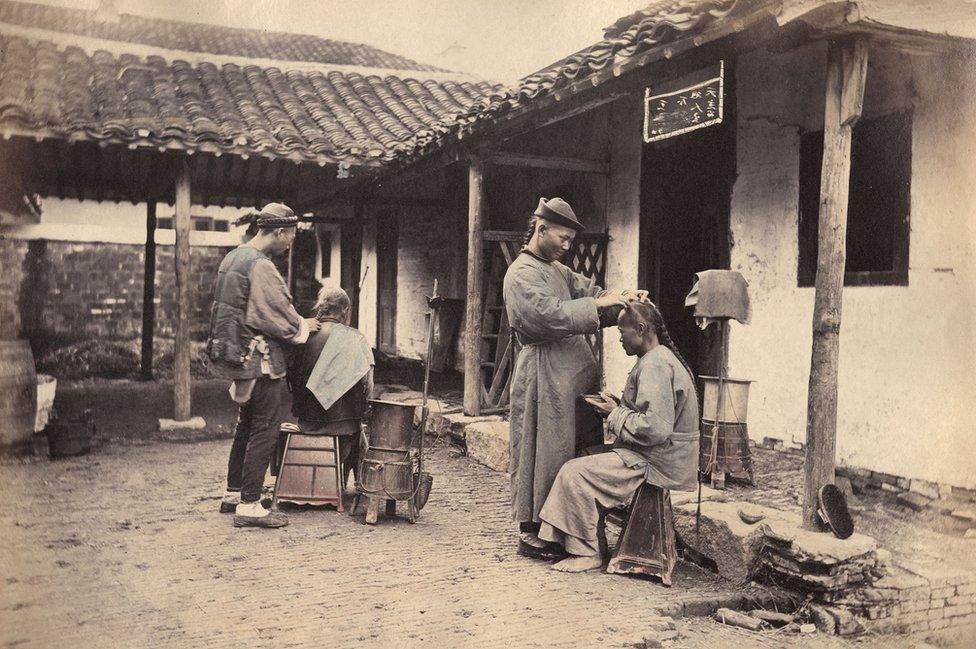
.
Rare 19th century photographs of Shanghai by English photographer William Saunders go on show in London in first public exhibition devoted to his work
Saunders travelled to China as an engineer in 1860 and following a brief return to Great Britain where he studied photography, he went back to establish one of the city's first photography studios
For more than a quarter of a century it became Shanghai's most successful photographic studio
Saunders is the first known photographer to produce hand-coloured photographs of China
His pictures offer an intimate view of the diverse inhabitants of Shanghai as China was on the cusp of the modern era

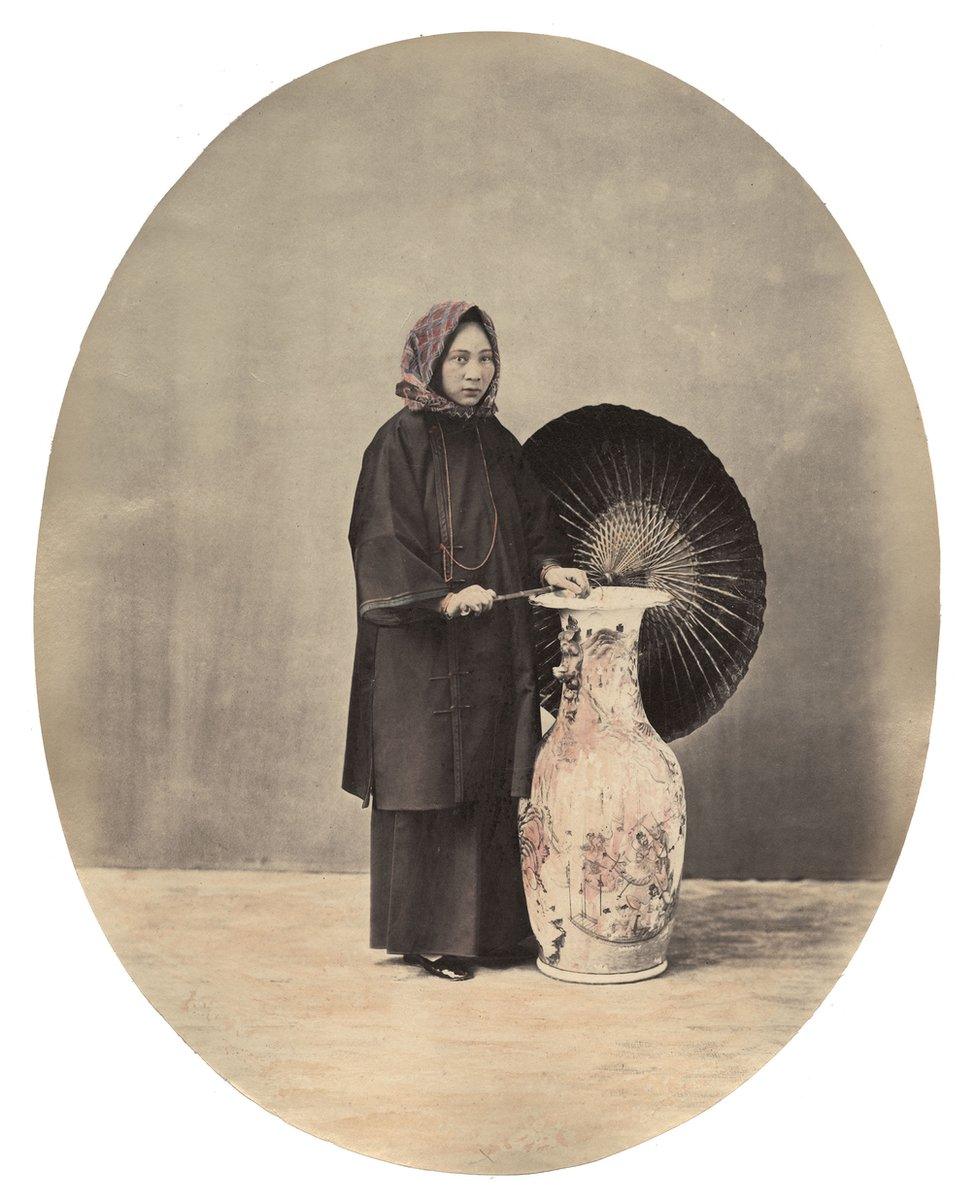
Saunders's portraits often featured props signifying the trades or social status of their subjects, but in this case a young woman stands beside a Cantonese (Guangzhou) floor vase holding only a parasol.
Her unbound feet and headscarf were typical of women of Guangzhou at the time. Shanghai not only attracted foreign businesspeople but also immigrants from other parts of China. Nineteenth-century photographers celebrated the beauty of women from Guangzhou.

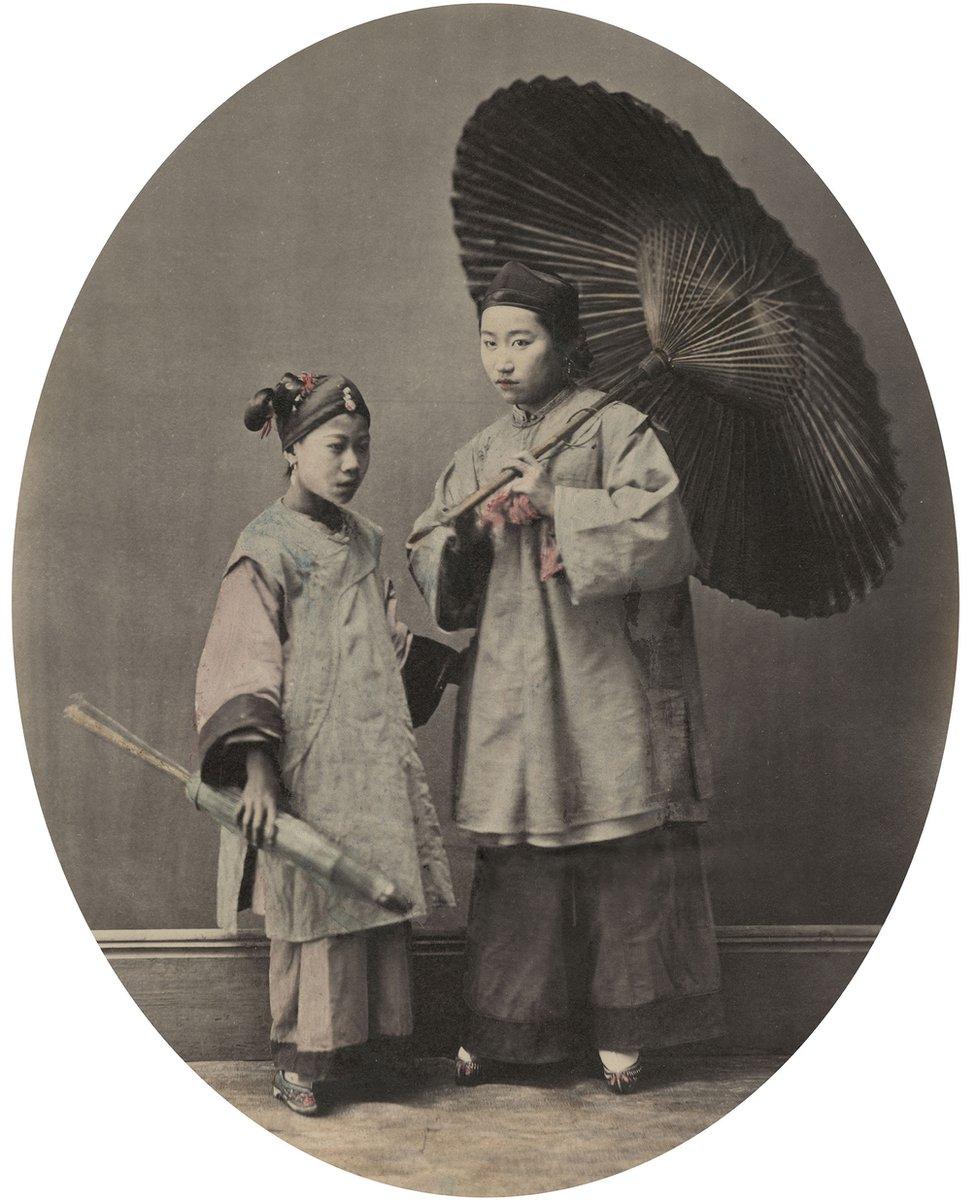
This woman and girl are said to be from Keangsoo (Jiangsu) province, an area around Shanghai. Their hairstyles are typical of the region, and their bound feet indicate how foot-binding was practised among a wider range of social classes than is often thought.
Parasols, which were accoutrements of the nobility in ancient China were in high fashion in late Qing dynasty Shanghai. Saunders sought to present the diverse regional styles that converged in the international Chinese city.

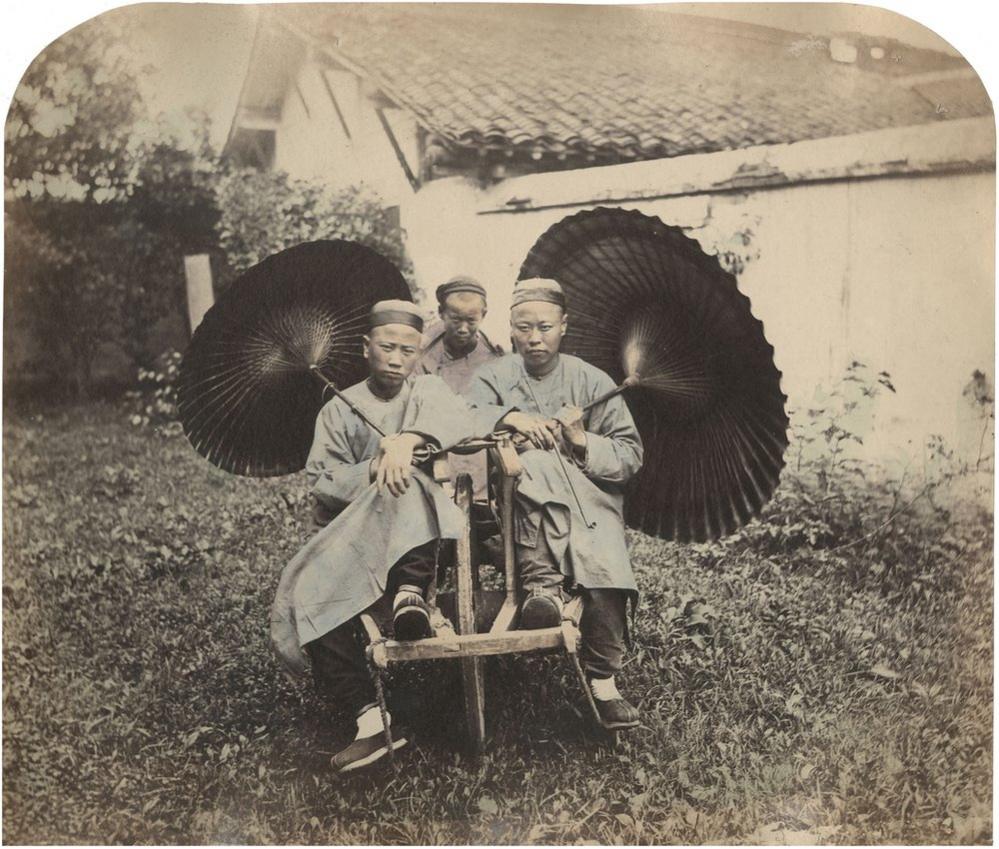
Saunders was fascinated by traditional Chinese technology that he believed predated similar inventions in the West.
In this photograph, two men pose on a 'traditional' man-powered vehicle - a wheelbarrow typical of late Qing Shanghai. The driver stands at the rear. The assertive gazes of the three men suggest a confidence in front of the camera that was relatively rare at the time in China.

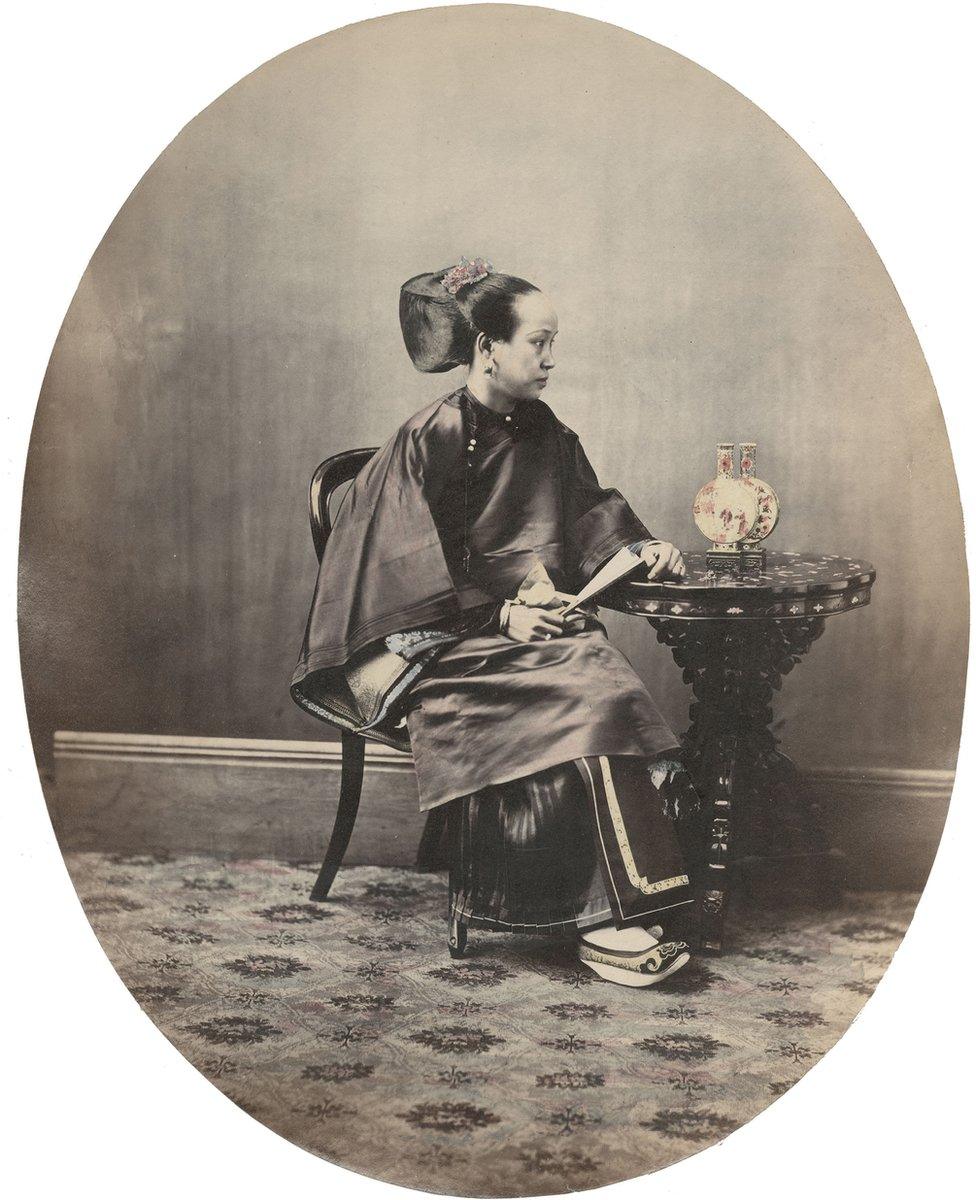
The woman in this portrait, though wearing the traditional silk dress of Guangzhou, sits in a Western-style chair in profile, a Western photographic compositional portrait format.
Although Shanghai had its own walled Chinese city, many Chinese native and migrant residents chose to live in the foreign settlements. Thus began a mixing of cultures that shaped Shanghai's openness to foreign influence. Saunders clearly took particular interest in the woman's elaborate hairstyle, fine clothing, and her slippered, unbound feet.

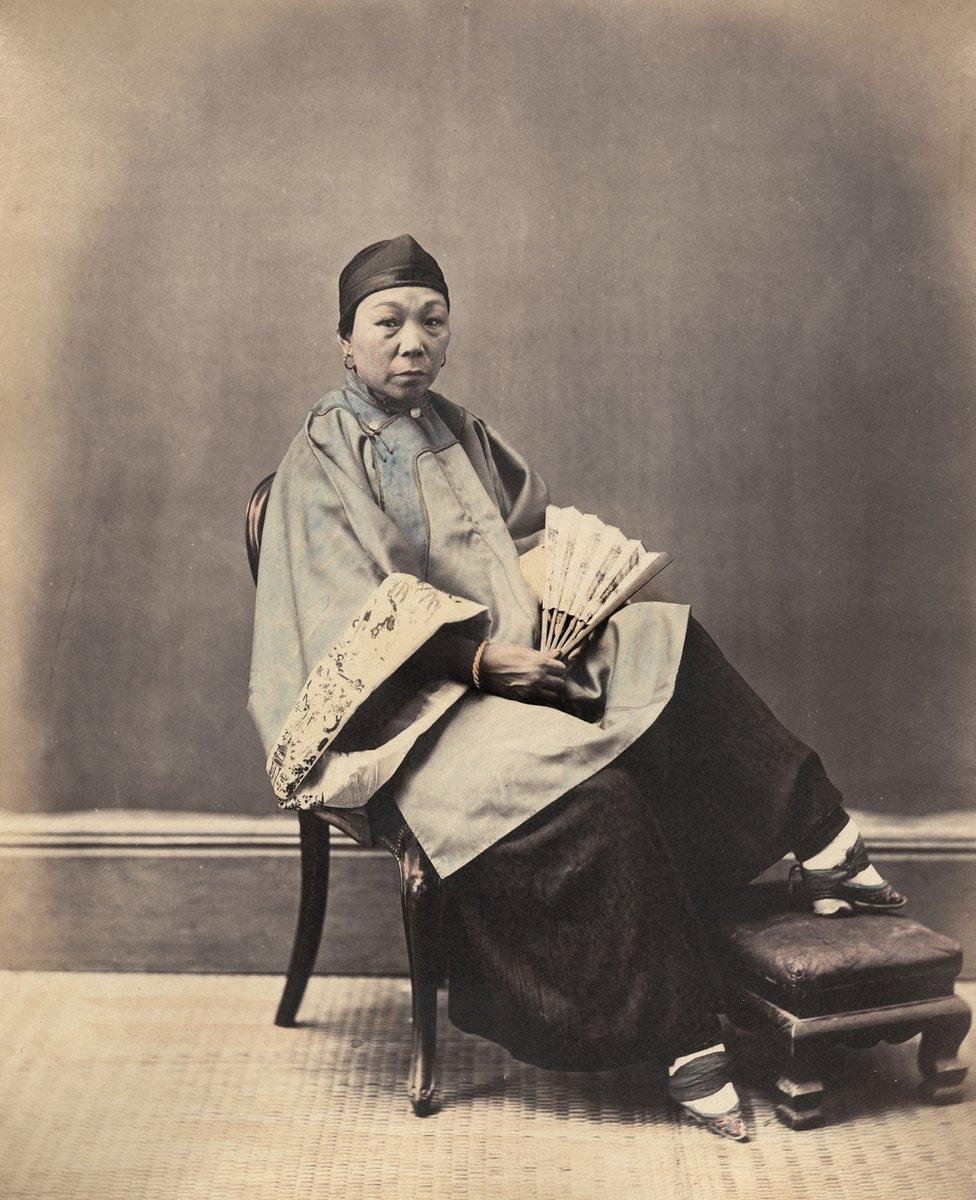
According to Saunders, the woman in this portrait, a resident of Shanghai wearing typical spring dress, agreed to having a photograph taken of her unbandaged bound foot before sitting for this portrait.
Her feet feature prominently here in her slippers as she sits in a Western-style chair, fixing the camera with a direct, proud gaze.


This photograph, one of Saunders's studio portraits of Shanghai tradespeople, depicts a brush seller—more accurately, a seller of feather dusters.
Saunders suggests that feathers were obtained from cooks who collected the plumage of fowl. In nineteenth-century Shanghai, small merchants like the brush seller often plied their wares while walking the streets of the city.

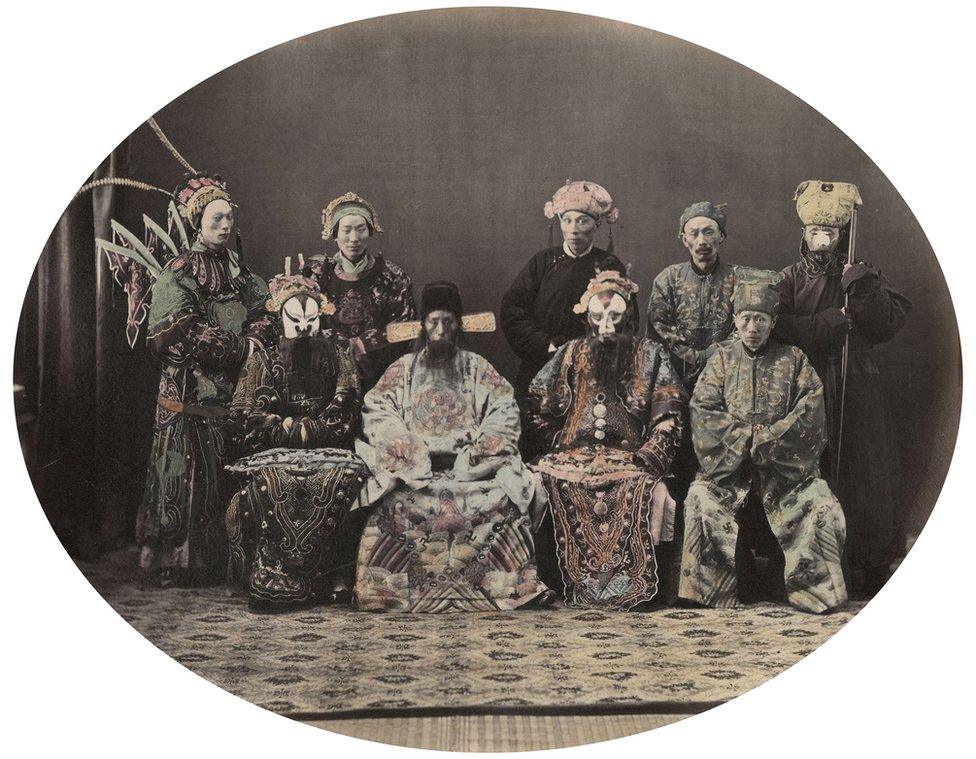
This is a striking group portrait of a troupe of Chinese actors in elaborate costume. As Saunders notes, the conventional costumes of Chinese theatre recalled much earlier, classical dress made of rich silks and lavished with intricate embroidery. Those playing villains often wore grotesque masks.

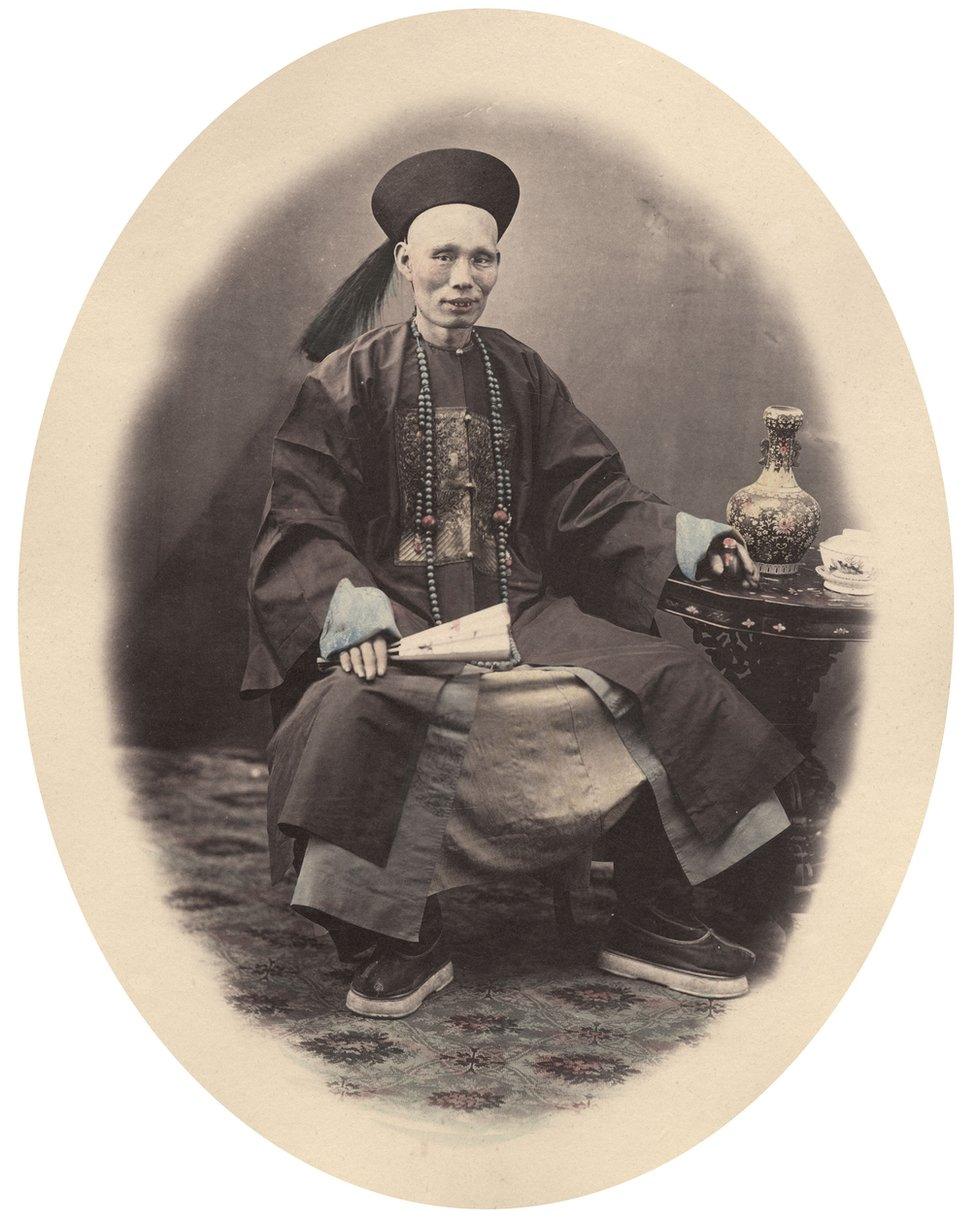
In this portrait, a man dressed as a Qing Dynasty official looks confidently towards the camera, his left hand steadying a snuff bottle on the table. Rather unusually, the man is relaxed and looks as if he is smiling as his portrait is taken.
Saunders photographed a full range of social classes in nineteenth-century China to provide his clients with a glimpse of the city's diverse Chinese population.

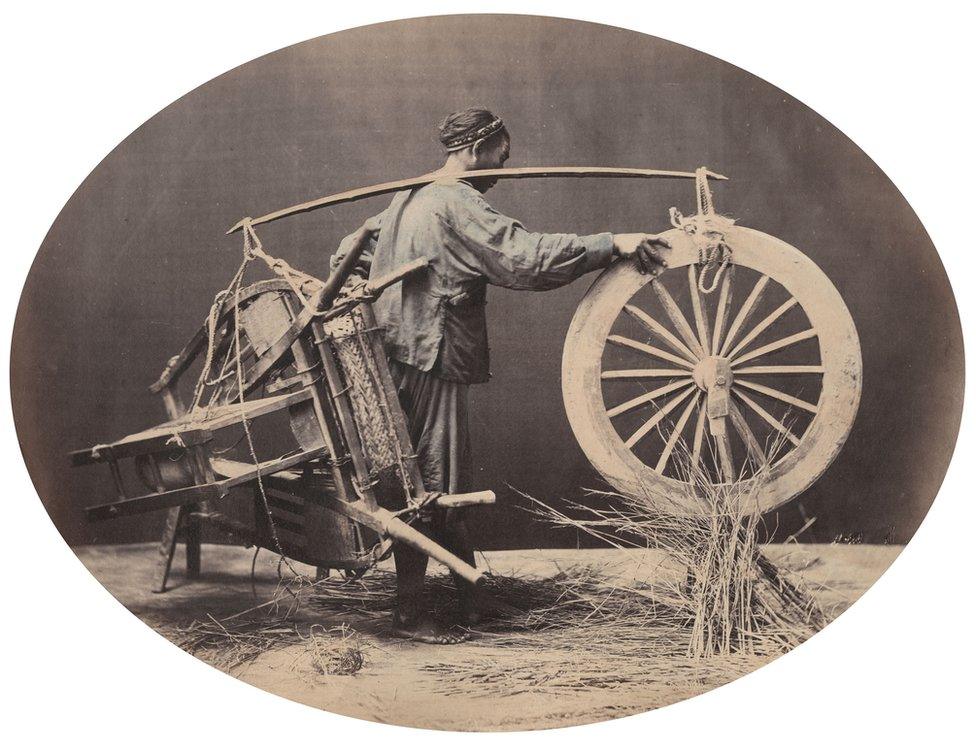
Saunders's fondness for the ingenuity of Chinese workers is evident in this photograph. It shows how the driver of a wheelbarrow-type taxi could disassemble his rig in order to avoid paying the taxes levied on wheeled vehicles crossing certain bridges.
The composition, which foregrounds the vehicle while obscuring the identity of its owner, portrays the anonymity of such workers in Shanghai at the time.

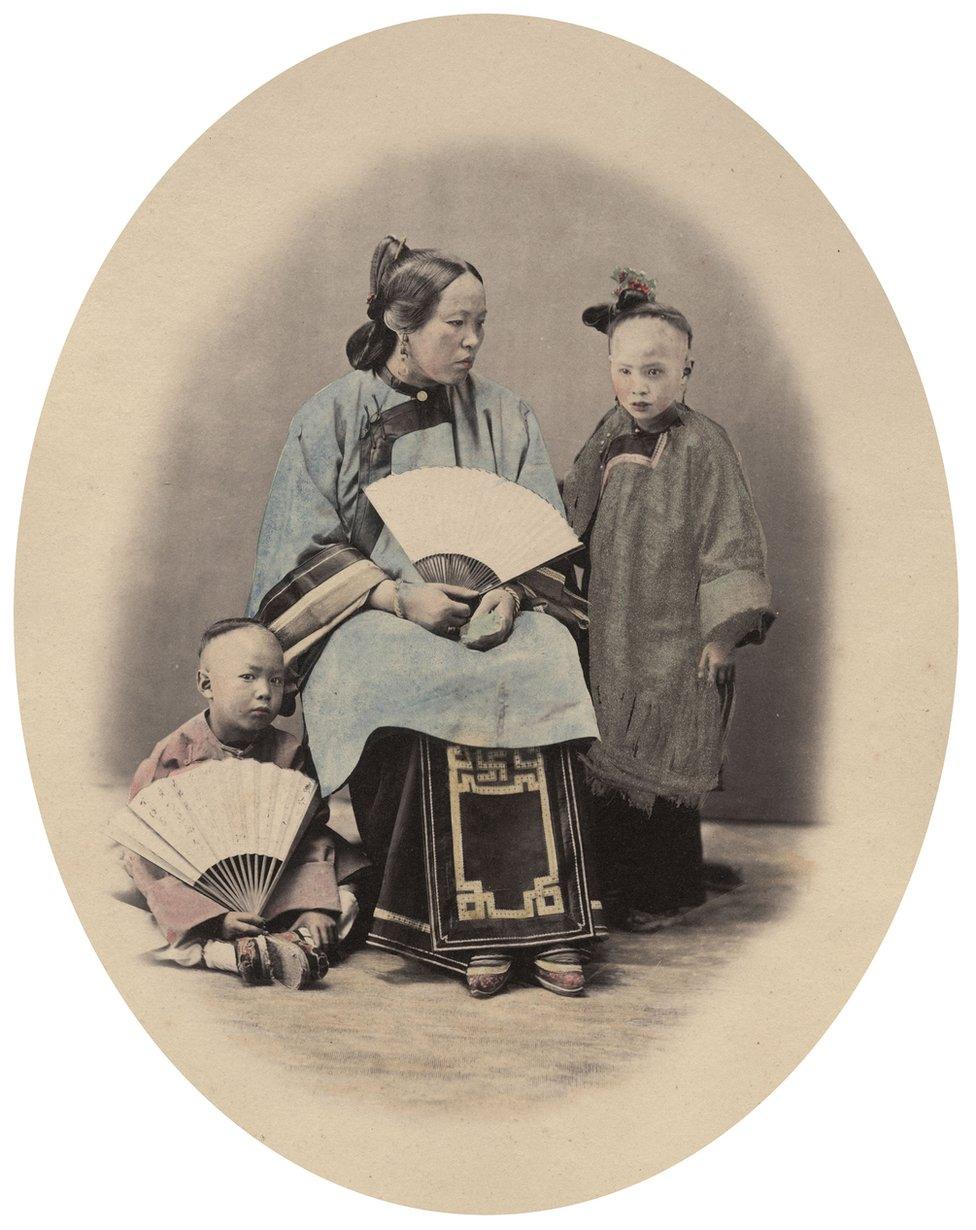
This portrait of a mother and children from Ningpo (Ningbo), on the coast south of Shanghai, shows the typical dress and hairstyles of the region.
Both the mother and her young daughter, standing to her mother's left, avert their gaze from the camera, while the seated boy directs an inquisitive look at the lens.

Life in Qing Dynasty Shanghai: The Photographs of William Saunders, external, part of Asian Art in London, can be seen from 4-12 November at the China Exchange, 32a Gerrard Street, London.
All captions by exhibition curator Stacey Lambrow.
All photographs courtesy Stephan Loewentheil Historical Photography of China Collection, external.